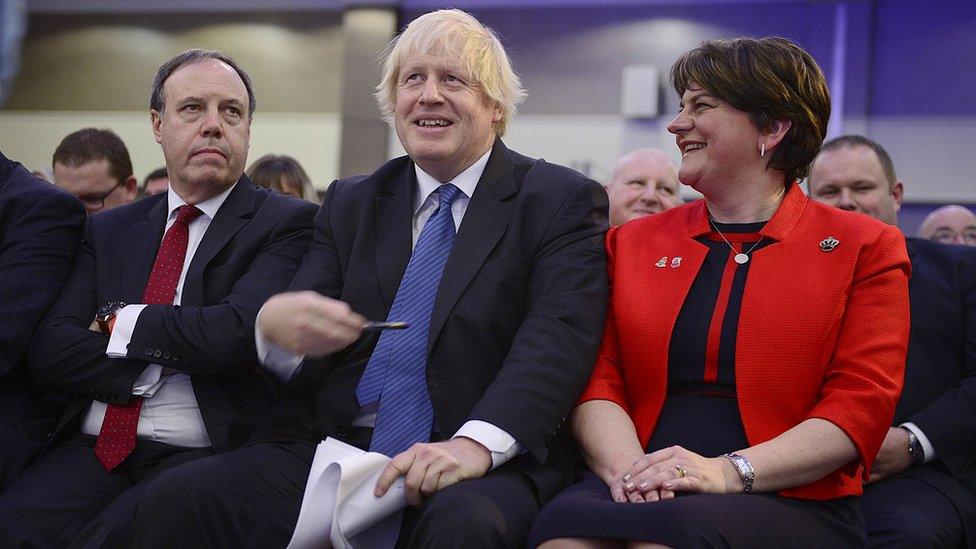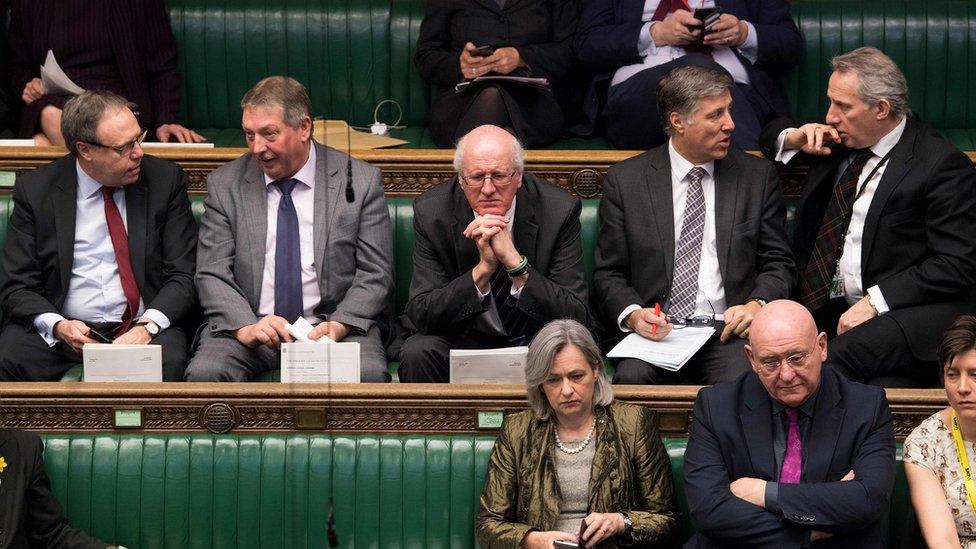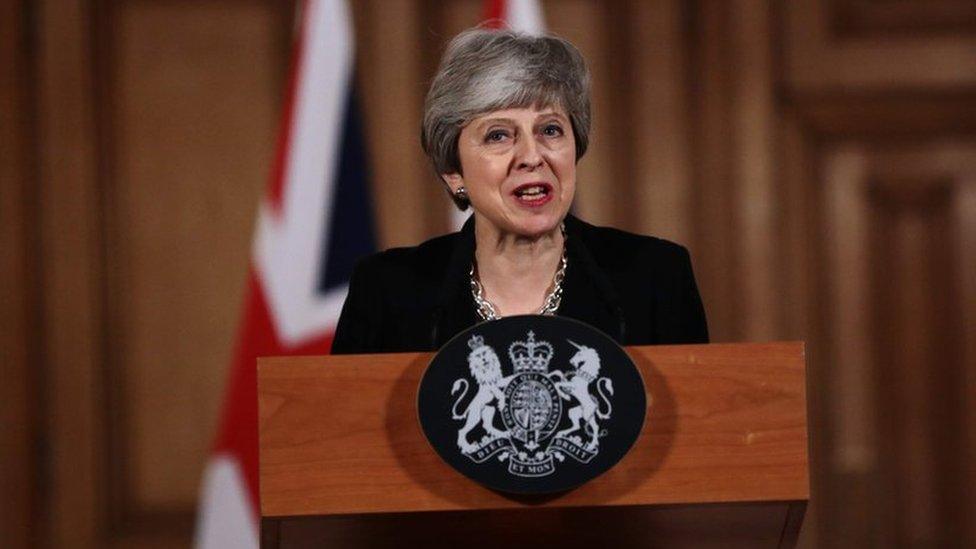Has Theresa May's Brexit strategy left the DUP in the lurch?
- Published

The DUP and Conservatives entered a confidence-and-supply arrangement after the 2017 General Election
Has the shift in Theresa May's Brexit strategy left the DUP in the lurch? It certainly looks that way.
Up to now, the prime minister had been trying to win the votes of the 10 DUP MPs, by seeking changes to her deal.
It seems she has now decided that path has reached a dead end.
Mrs May has side-stepped her confidence-and-supply partners, and turned to the official opposition benches to reach consensus.
Yet again, the DUP has criticised her overall handling of the negotiations, this time as "lamentable".
It's warned that allowing Jeremy Corbyn to "sub-contract" the future of Brexit is unlikely to end well.
But Number 10 has likely listened to the repeated opposition coming from DUP quarters and figured that it's time to pursue a more flexible route.
As recently as Sunday, Sammy Wilson said the DUP would vote against the deal "1,000 times", if it stayed the same.
Well, there's no re-negotiation on the backstop forthcoming from the EU.
Theresa May has accepted that avenue isn't open to her - despite the DUP's repeated calls for it.
It's not clear if talks with Labour will lead to much, or if the EU will be willing to grant another extension, without enforcing certain conditions like the UK taking part in next month's European elections.
Jeremy Corbyn: "I recognise that she has made a move... I recognise my responsibility"
If something can emerge from the May-Corbyn talks, the government has said that won't change the withdrawal agreement - but rather shape the UK's future relationship with the EU (the political declaration).
That means getting Labour to accept the backstop, which will prove a big task unless the prime minister is willing to show flexibility on some of Labour's demands.
Other parties in Northern Ireland, who are pro-remain and support the backstop, will hope Theresa May has now left behind the Brexiteer wing of her party and the DUP.
The repeated criticism being that the DUP does not represent the majority in Northern Ireland who voted remain in 2016's referendum.
The DUP, meanwhile, has not indicated that it is preparing to withdraw its support for the government.
It's always said it would only take drastic action, if the government got the withdrawal agreement (including the backstop) through Parliament.
That's still a big if: Mrs May's change of direction, however, shows she is determined - one way or another - to get the votes she needs from somewhere, to avoid no deal.
Pulling the plug
The DUP could yet pull the plug - but given the influence it wields at Westminster, that's not a decision it will take easily.
On Tuesday night, Environment Secretary Michael Gove said the government still wanted to secure the support of the DUP - but it's hard to see how this could happen, when it is now pursuing options the DUP is so against.

Boris Johnson was a guest speaker at the DUP party conference in 2018
Labour's call for a permanent customs union with the EU would breach the version of Brexit that the DUP wants, and also would not eliminate the potential for border checks in Ireland.
For its part, the DUP says it will judge all outcomes in the coming days against its "clear unionist principles".
However much resistance it puts up, for now Mrs May is taking her chances with Labour - and leaving her Northern Ireland allies in the margins.
- Published3 April 2019

- Published2 April 2019
